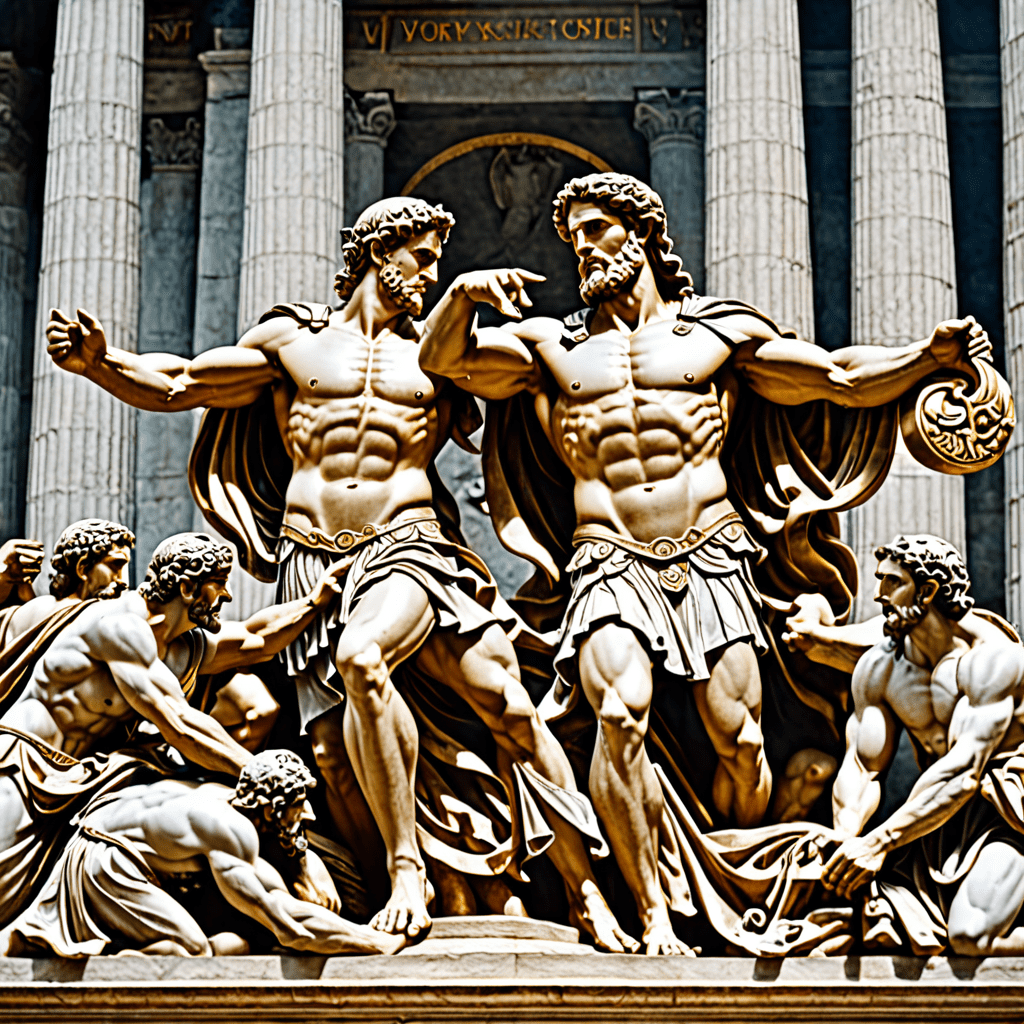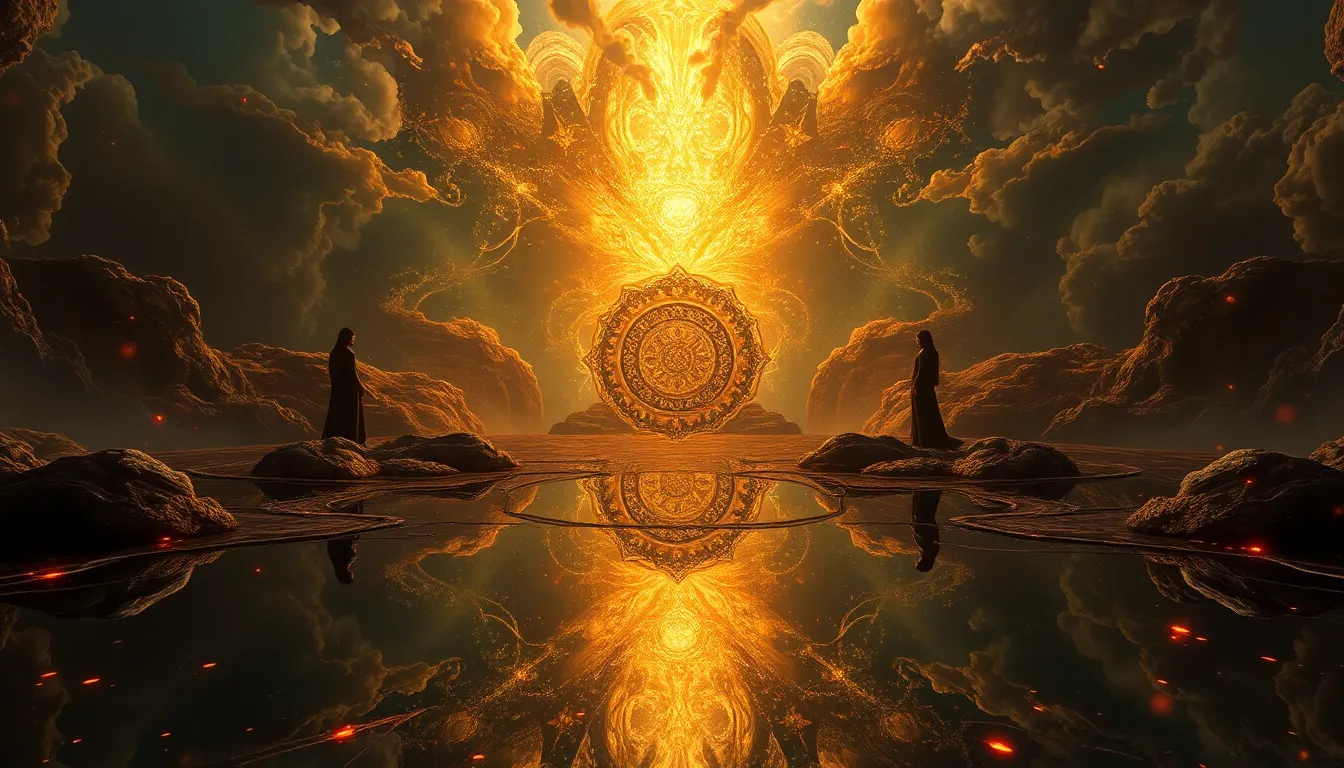Underworld Myths: The Stories That Define Our Existence
I. Introduction to Underworld Myths
Underworld myths are narratives that explore the realms of the dead, the afterlife, and the journeys of souls through these mystical landscapes. They often reflect humanity’s deepest fears and hopes regarding mortality, existence, and the unknown. These myths play a crucial role in various cultures, providing a framework for understanding death and what lies beyond it.
This article will delve into the historical context, major myths from around the world, common themes, psychological interpretations, and the relevance of underworld myths in contemporary culture. By examining these narratives, we can gain insight into the human condition and the stories that have shaped our understanding of life and death.
II. Historical Context of Underworld Myths
The origins of underworld beliefs can be traced back to ancient civilizations, where the mystery of death prompted the creation of elaborate mythologies. The ancient Egyptians, Greeks, and Mesopotamians each developed distinct concepts of the afterlife, reflecting their societal values and spiritual beliefs.
Over time, these concepts evolved, influenced by changes in religious practices, philosophical thought, and cultural exchanges. For instance, Greek mythology introduced a more structured view of the afterlife with distinct realms and deities, while Eastern traditions often emphasized the cycle of rebirth.
The cultural significance of underworld myths extends beyond mere storytelling; they served to provide comfort, moral guidance, and a sense of community. Myths helped societies navigate the complexities of existence and offered explanations for the mysteries surrounding death.
III. Major Underworld Myths from Around the World
Across various cultures, there are notable underworld myths that reveal the diversity of thought surrounding death and the afterlife:
- Greek Mythology: The realm of Hades is central to Greek beliefs, where souls cross the River Styx guided by Charon. This journey symbolizes the transition from life to death.
- Egyptian Mythology: The Duat, or the Egyptian underworld, features the Weighing of the Heart ceremony, where the deceased’s heart is weighed against a feather to determine their fate in the afterlife.
- Norse Mythology: Hel is the realm ruled by the goddess Hel, where those who did not die heroically reside. This reflects the Norse values surrounding honor and valor in life and death.
- Asian Mythologies: In Hindu and Buddhist traditions, Yama is the god of death who oversees the cycle of rebirth, illustrating the idea that death is not an end but a transition to new life.
IV. Common Themes in Underworld Myths
Underworld myths often share several overarching themes that resonate across cultures:
- Death and the Afterlife: Most myths explore what happens after death, providing narratives about the soul’s journey and the fate that awaits it.
- The Journey of the Soul: Many stories depict the soul’s passage through various trials or realms, emphasizing transformation and growth.
- Judgment and Morality: A common theme is the judgment of the deceased based on their earthly actions, reflecting cultural values regarding right and wrong.
- Rebirth and Regeneration: Several myths incorporate the idea of rebirth, signifying that death is a part of a larger cycle of existence.
V. Symbolism and Archetypes in Underworld Myths
The underworld serves as a powerful metaphor for transformation and change. It is often depicted as a place of darkness, but also as a realm where enlightenment can be achieved. Key figures emerge as archetypes within these myths:
- Charon: The ferryman of the dead, symbolizing the transition between life and death.
- Anubis: The Egyptian god associated with mummification and the afterlife, representing protection and guidance.
- Persephone: The goddess of spring who spends part of the year in the underworld, embodying the cycle of life, death, and rebirth.
Additionally, the interplay of darkness and light in these narratives reflects the duality of existence, where life and death are intertwined and equally significant.
VI. Psychological Interpretations of Underworld Myths
Psychologically, underworld myths can be analyzed through the lens of Carl Jung’s concept of the collective unconscious. These stories tap into universal archetypes and symbols that resonate with the human experience, reflecting our fears, desires, and aspirations.
Myths often serve as a mirror to our inner struggles, confronting us with themes of mortality, loss, and transformation. They can also provide therapeutic value, helping individuals process grief and understand their own journeys through life and death.
VII. Underworld Myths in Contemporary Culture
In modern times, underworld myths continue to influence literature, film, and art. Works such as Dante’s “Inferno” and films like “The Matrix” draw upon these ancient narratives to explore existential themes. Additionally, many contemporary spiritual practices incorporate elements of these myths, reflecting a resurgence of interest in ancient wisdom.
VIII. Comparative Analysis of Underworld Myths
When comparing underworld myths across cultures, several similarities and differences emerge. While the fundamental questions about death and the afterlife are universal, the narratives vary significantly:
- Similarities: Most cultures portray a journey after death and a form of judgment.
- Differences: The nature of the underworld, the figures involved, and the outcomes for souls can vary widely.
- Geographical Influence: The environment often shapes these narratives, with agricultural societies emphasizing rebirth and pastoral cultures focusing on valor and honor.
Oral traditions have also played a significant role in the transmission of these myths, with many cultures preserving their stories through generations before they were written down.
IX. The Future of Underworld Myths
The relevance of underworld myths remains strong in a modern context, particularly as globalization brings diverse cultural narratives into dialogue. This exchange can lead to new interpretations and adaptations of ancient stories, allowing them to resonate with contemporary audiences.
As society evolves, new myths may emerge that address current existential concerns, reflecting the ongoing human quest for meaning in life and death.
X. Conclusion: The Enduring Power of Underworld Myths
In summary, underworld myths are profound narratives that have shaped human understanding of life, death, and the afterlife across cultures and epochs. They offer insights into our fears, morals, and the cycles of existence. Understanding these stories is essential, as they provide not only a glimpse into ancient beliefs but also a reflection of our shared humanity.
The exploration of underworld myths is a testament to the enduring power of storytelling, illustrating how these age-old narratives continue to inform and inspire us in our search for meaning.



